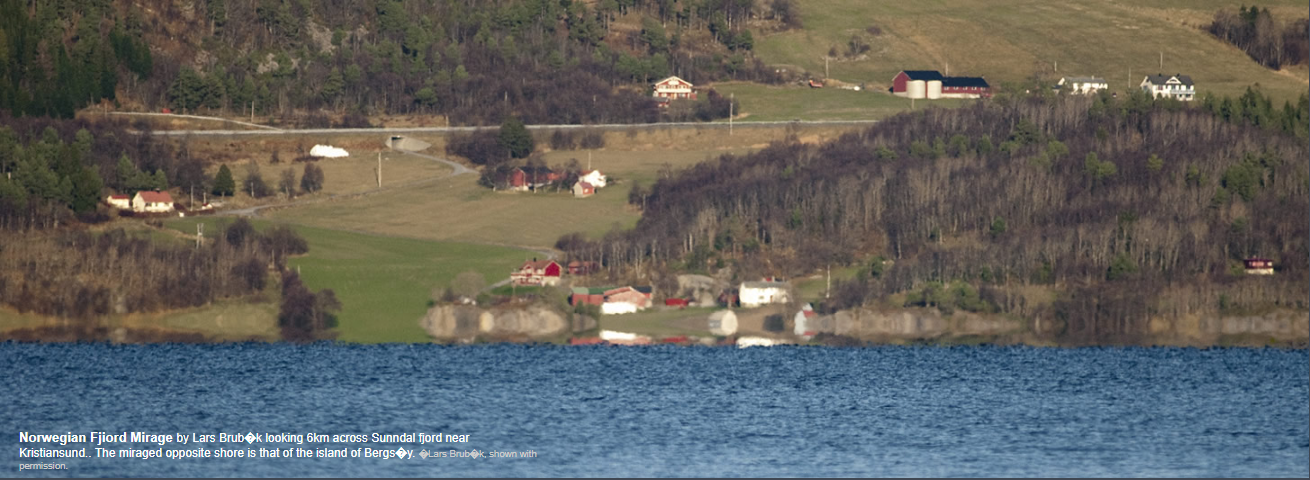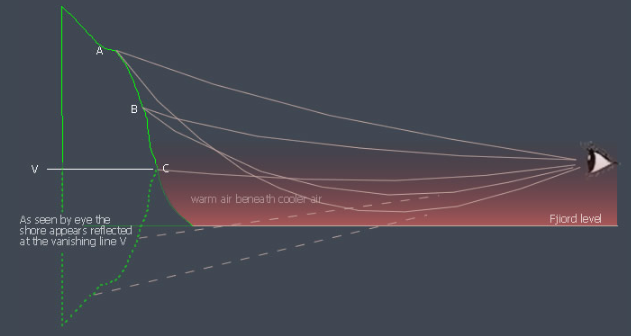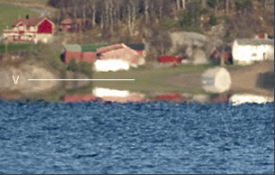Fjiord Mirage Norway
Fjord Mirage in Norway: A Fascinating Optical Phenomenon
Have you ever witnessed a breathtaking mirage that seems to defy the laws of physics? One such mesmerizing spectacle is the Fjord Mirage, often observed in Norway. This optical phenomenon occurs when the conditions are just right, creating a captivating illusion that enchants onlookers. In this article, we will delve deeper into the intricacies of the Fjord Mirage, exploring its causes and the science behind its remarkable visual effects.
Understanding the Fjord Mirage
The Fjord Mirage is a type of inferior mirage, where the miraged image appears below the actual object. It typically occurs over bodies of water, such as fjords, when there is a significant temperature difference between the air and the water. The phenomenon is visible when there is a steep temperature gradient close to the water surface compared to higher altitudes.
Exploring the Factors at Play
To comprehend the formation of the Fjord Mirage, we need to consider several factors:
-
Temperature Gradient: The Fjord Mirage arises due to variations in air temperature at different heights. When warm air lies above cooler air, light rays passing through these layers undergo refraction, resulting in the bending of light.
-
Angle of Incidence: As light travels at low angles across the varying temperature layers, it bends towards the cooler air. Consequently, rays from objects across the fjord appear to be coming upwards, creating an inverted reflection.
-
Vanishing Line: The mirroring effect occurs not at the water level but higher up at what is known as the vanishing line. This line represents the point where the real view and the mirage view converge.
The Astonishing Visual Effects
When observing the Fjord Mirage, one can witness several intriguing visual effects:
-
Upside-Down Reflection: Houses and shore features close to the water are mirrored upside down. This peculiar mirroring occurs due to the refraction of light rays passing through the varying temperature layers.
-
Mirage Vanishing-Line: The vanishing line, situated above the water surface, marks the boundary between the real view and the mirage view. Details below this line are invisible to the naked eye.
-
Illusory Water Edge: The uneven upper edge of the fjord water, which appears to be real, is actually the lower edge of the mirage. This optical illusion adds to the mystique of the Fjord Mirage.
Witnessing the Fjord Mirage in Norway
Norway, with its majestic fjords and diverse weather conditions, provides an ideal setting for experiencing the captivating Fjord Mirage. The miraged opposite shore often appears vividly across the vast expanse of water, captivating observers with its enchanting beauty.
A Photographer's Perspective
Lars Brubøk, a photographer who captured an incredible image of the Fjord Mirage, described his experience of witnessing this phenomenon. He noted that the mirage was particularly pronounced when he was low above the water, driving along the fjord. The cold weather and a breeze contributed to the formation of the Fjord Mirage, creating a surreal visual display.
Conclusion
The Fjord Mirage in Norway is a remarkable natural phenomenon that mesmerizes all who witness it. Its formation relies on a complex interplay of temperature gradients and refraction of light, resulting in an enchanting visual illusion. Whether you are a nature enthusiast or a photography enthusiast, experiencing the Fjord Mirage firsthand is an unforgettable encounter with the wonders of atmospheric optics.

Norwegian Fjiord Mirage by Lars Brub�k looking 6km across Sunndal fjord near Kristiansund.. The miraged opposite shore is that of the island of Bergs�y. �Lars Brub�k, shown with permission

"We had rather cold weather, very close to freezing, and a breeze. Driving home from work ca. 13:30 I noticed pronounced inferior miraging of the shore details along the opposite coastline. As my route dipped and rose along the fjord, the phenomenon was visible only when I was low above the water.
This fjord has to my knowledge never been known to freeze, and there has been reports that recent sea temperatures are warmer than before. I therefore assume that the sea surface was considerably warmer than the air temperature and that a somewhat steeper temperature gradient existed close to the water surface than higher up.
Picture taken with a 300 mm lens on DX-format sensor, from ca. 4 m above sea level, across 6 km of sea."
Houses and shore features close to the water are mirrored upside down. The mirroring occurs not at the water level but higher up at what is named the vanishing line. The distant shoreline below the vanishing line is not visible. The uneven upper edge of the the fjiord water is not real - it is the lower edge of the mirage.
The mirage is an inferior mirage because the image is below the real object. Light passing at low angles across the different temperature air layers is refracted so that rays coming from the opposite shore appear to be coming upwards.
The ray diagram attempts to show what is happening but like all mirage ray diagrams the vertical scale has to be grossly exaggerated. All possible rays between the eye and the distant shore are shown. Two rays from (A) reach the eye. The upper one is slightly curved downwards towards the warmer air. The lower ray from (A) is sharply curved and appears to the eye to come from shore details reflected by a mirror. Rays from point (B), lower down, do the same. Position (C) is different. Only one ray reaches the eye. Rays from lower down the shore cannot reach the eye at all and so it is invisible.
The level (C) is the level of the mirage vanishing-line. The 'real' view and inverted mirage view join at the vanishing line and the eye can see no details of the scene that are below it.

Note: this article has been automatically converted from the old site and may not appear as intended. You can find the original article here.
Reference Atmospheric Optics
If you use any of the definitions, information, or data presented on Atmospheric Optics, please copy the link or reference below to properly credit us as the reference source. Thank you!
-
<a href="https://atoptics.co.uk/blog/fjiord-mirage-norway/">Fjiord Mirage Norway</a>
-
"Fjiord Mirage Norway". Atmospheric Optics. Accessed on April 19, 2024. https://atoptics.co.uk/blog/fjiord-mirage-norway/.
-
"Fjiord Mirage Norway". Atmospheric Optics, https://atoptics.co.uk/blog/fjiord-mirage-norway/. Accessed 19 April, 2024
-
Fjiord Mirage Norway. Atmospheric Optics. Retrieved from https://atoptics.co.uk/blog/fjiord-mirage-norway/.